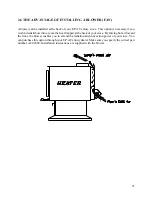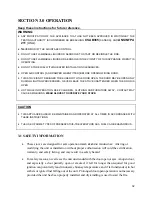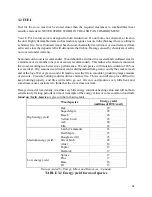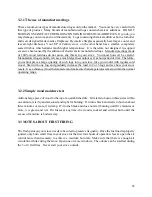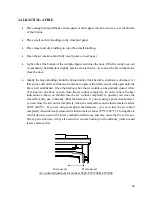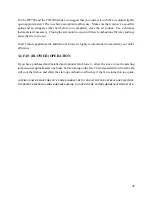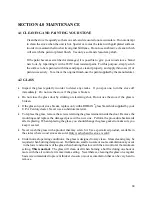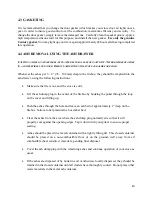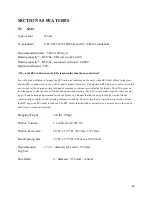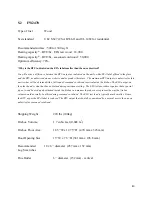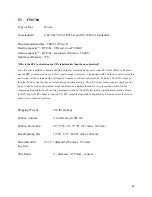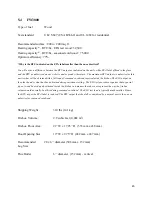
45
5.4 FW3000
Type of fuel
Wood
Test standard
ULC S627 (CSA B366.2) and UL 1482 for residential.
Recommended surface : 800 to 2000 sq. ft.
Heating capacity* – BTU/hr., EPA test wood: 32,300
Heating capacity* – BTU/hr., seasoned cordwood : 75,000
Optimum efficiency: 77%
*Why is the BTU indicated on the EPA label smaller than the one advertised?
You will notice a difference between the BTU output as indicated on the unit’s white EPA label affixed to the glass
and the BTU as advertised on our web site and/or product literature. The maximum BTU output we advertise for this
unit is what will be obtained with a full load of seasoned cordwood inserted inside the firebox. The EPA output, on
the other hand, is what has been obtained during emissions testing. The EPA test procedure requires that a special
type of wood be used and positioned inside the firebox in a manner that does not represent the way the firebox
volume would normally be utilized using seasoned cordwood. The EPA test load is typically much smaller. Hence,
the BTU as per the EPA label is reduced. The BTU output that should be considered by a normal user is the one we
advertise for seasoned cordwood.
Shipping Weight
310 lbs (141 kg)
Firebox Volume :
2.9 cubic feet (0,082 m
3
)
Firebox Floor Area:
21’’W x 17.25’’D (533 mm x 438 mm)
Door Opening Size
19’’W x 9.75’’H (482 mm x 247 mm)
Recommended
20 x 6’’ diameter (508 mm x 152 mm)
Log Size
Flue Outlet
6’’ diameter (152 mm) - vertical

